
The first joint Thanksgiving as envisioned by artist Jennie Augusta Brownscombe (1850-1936), “The First Thanksgiving” (1914), oil on canvas, Pilgrim Hall Museum, Plymouth, Massachusetts.
Growing up, attorney Anita Shifflett celebrated Thanksgiving in the same way as most other Americans, by getting together with relatives to enjoy a hearty meal.
“Thanksgiving meant family,” said Shifflett, a card-carrying member of the Native American Lumby tribe. “You had to go home for Thanksgiving. You had to go back to the tribe. My grandmother used to cook the turkey in the yard because there was no oven big enough. You looked forward to it because you were going to see all your cousins.”
Shifflett’s activist grandfather marched on Washington in favor of Indian rights and her family tree is showcased in the National Museum of the American Indian in Washington, D.C.. However, one subject her family never discussed at these large gatherings was the long-ago event that inspired Thanksgiving.
“We never discussed the Indians, the pilgrims,” she said. “We never discussed our role as Indians in Thanksgiving. Thinking about it now, I do think it’s strange. It’s something the adults could have done to educate a whole generation of grandchildren, but they didn’t.”
New arrivals
Native people had lived on the East Coast of the United States for thousands of years before the European settlers arrived. A ship carrying 101 men, women and children crossed the Atlantic Ocean in 1620 and settled an area that is now known as Cape Cod, Massachusetts. These people, who established what became known as the Plymouth Colony, were English Protestants who wanted to break with the Church of England.
Most Americans associate the federal holiday — which is celebrated on the fourth Thursday in November — with the happy occasion when these pilgrims and American Indians came together for a grand feast in 1621 to celebrate the Plymouth Colony’s first successful harvest. They ate, sang, danced and played ball games.
Today, Americans still gather with family and friends to enjoy a Thanksgiving feast and, for many, watching football on television, or playing the sport in the backyard, is an integral part of the holiday.
When American children are taught the Thanksgiving story, they learn of the strong friendship between the native peoples and the colonists. Students are introduced to Tisquantum, better known as Squanto, a member of the Patuxet tribe who helped the pilgrims survive those first harsh winters by showing them how to successfully plant crops in this “New World”.
More to the story
However, for Native Americans, there is more to the story.
Many now see Thanksgiving as the beginning of the end of life as the native peoples had known it before the arrival of the pilgrims, who began to lay claim to more and more land.
For example, when Squanto returned to his tribe years later, he learned the Patuxet, as well as many other coastal New England tribes, had been exterminated by a plague. Native Americans had no natural immunity to the infectious diseases the Europeans had brought with them.
And each year at Thanksgiving, members of the United American Indians of New England meet at Plymouth Rock for a day of mourning. They remember the victims of the Mystic, Connecticut massacre of 1637, when colonists from Plymouth, Massachusetts, burned a Pequot village to the ground, killing hundreds of women, children and older men. The only Pequot survivors were warriors, who’d been out on their own raiding party.
“In 1975, the official number of Pequot living in Connecticut was just 21 and similar declines in native population took place throughout New England,” said Dennis Zotigh, a cultural specialist at the Smithsonian’s National Museum of the American Indian. “An estimated 300,000 Indians died by violence and even more were displaced in New England over the next decades [after 1637].”
Zotigh believes the real story of Thanksgiving needs to be taught to American children by the time they graduate from high school.
“Presenting Thanksgiving to children as primarily a happy time trivializes our shared history and teaches a half truth because there’s more to it,” he said. “There should be a balance. It should be a happy time, yet accuracy should also be a quotient in celebrating Thanksgiving.”
Holiday traditions
The harsh realities endured by native peoples in the decades following that first joint Thanksgiving are why Zotigh, like many Native Americans, has less-than-positive feelings about the holiday.
“Do I celebrate Thanksgiving?” he said. “No, I don’t celebrate, but I do take advantage of the holiday and get together with family and friends to share a large meal without once thinking of the Thanksgiving in 1621. I think it’s the same in many native households.”
These days, Thanksgiving invokes a sense of nostalgia for Anita Shifflett. Thanks to an influx of federal construction money, her once-poor North Carolina-based tribe is now more affluent than ever. And with that affluence, has come accelerated assimilation.
“There’s actually a sadness I feel at Thanksgiving now because it’s not the way it used to be celebrated in our tribe,” she said. “I really feel sad that my one son cannot experience Thanksgiving like I did as a child because it was so much about family then.”
This year, Shifflett and her four siblings are celebrating Thanksgiving with their individual nuclear families. Shifflett, who is engaged to marry a non-Indian, will have dinner with her fiancée’s family. However, one member of her family is continuing the Thanksgiving tradition. Shifflett’s mother, Mary, who will be 80 years old next month, still plans to return to the tribe for Thanksgiving, just as she always has throughout her life.


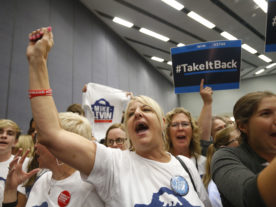


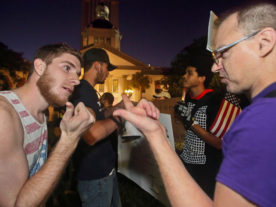


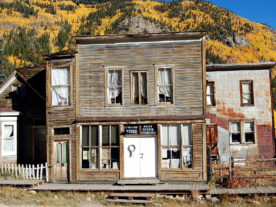
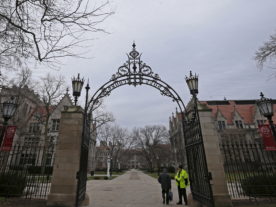

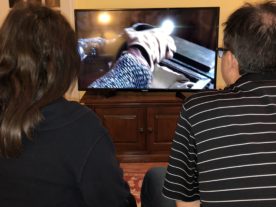





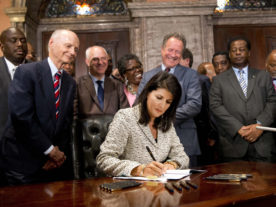

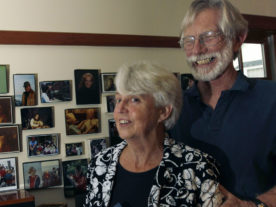


Nice angle on the article, and nothing untrue that I could detect. But, nothing personal, its a crock. As a “card-carrying tribal member” I sit here in my nice, warm house on the day before Thanksgiving, overlooking my ranch and farm, and find it impossible to regret the failure of the Amerind culture in the face of the more rational, productive European culture. For that European culture is now mine. Do I want my grandchildren to be aware of their “Native American” background? Absolutely, just I want them to also know that there are no truly native American tribes: someone was here before the Cherokee, Sioux, Kioux, etc arrived: those people were killed or assimilated. Before them, there were other people. And the first on the continent weren’t created/born here: they were driven out of their homes by more powerful people, people with a better economic/military/social model. The european tribes when through the same process as have all other peoples. As this country may well experience someday. So, here we are will all of the benefits of this wonderful country. Do I and my family celebrate Thanksgiving? A resounding yes!
Your comment is insulting. Although you carry a card, it means nothing when you speak negatively of Native American tribes and our people. Yes there definitely are Native American tribes alive today and we are not remnants of the past. Most tribes promote the teaching our children who they truly are as indigenous to this land. You obviously do not live among your people and assimilated. The least you could do on this day is to respect those of our people who are still living and practicing our culture and traditional religious beliefs related to our creation as a people from mother earth. We were given our culture from the creator and did not adopt it from any other people, nor did we come from another people or location. There are some of us who still carry on our true identity and believe in our creation on this land. Thank you.
“The least you could do on this day is to respect those of our people who are still living and practicing our culture and traditional religious beliefs related to our creation as a people from mother earth.”
So, that means you’re a kind of creationist? Haven’t you seen the fossil record? Evolution is a fact.
“We were given our culture from the creator and did not adopt it from any other people,…”
Problem with that is, different Native American tribes have different creation stories. So, of all of them which one is right? They can’t all be right, can they?
I am pretty sure that most Native American historians and anthropologists would tell you that neighboring tribes thru alliances or the capturing of of enemy tribe members were in some ways in small increments affected to subtle changes as new information diffused thru the tribes.
“nor did we come from another people or location.”
Huh? You mean there was no Berring Strait crossing? Oh, that’s right. I forgot about the instantaneous creating stuff by the Creator thing. Tribal territory was nos not fluid with all that warring going on amongst them? No moving around?? C’mon. Get serious.
Next thing we’ll know is that you will be trying to convince us that the earth was created by ducks piling mud up on a turtle’s shell in the middle of water, and that stars are lights shining thru holes poked in a bear skin blanket with a great fire behind it. Oh wait…
“There are some of us who still carry on our true identity and believe in our creation on this land.”
What do you mean by “carry on our true identity”?
“Thank you.”
You’re welcome.
You have a right to your religious and cultural beliefs and so do we in every tribal nation. You don’t have to accept our beliefs, all we ask is that others respect it. We are still here.
“You have a right to your religious and cultural beliefs and so do we in every tribal nation.”
Yes, one does. The problem arises in that one does not a right to their own facts. Evolution is a fact. Creationist stories, no matter who promotes them, are blatantly false, and those who indoctrinate children into believing falsehoods are abusing their undeveloped intellectual ability to be skeptical and question such ridiculous myths given to them as truths.
Now look, I asked you some pointed questions, and you decided to avoid answering them. Of course we know why. Because questions such as those start to guide you to reality, and you are placing your pride in your ethnicity and its past ahead of that. Don’t lead pride make and keep you stubborn.
Now please, endeavor to answer questions directed toward you, not only in my former post, but those in this post as well. I really am curious to see how you reason through your beliefs.
“You don’t have to accept our beliefs, all we ask is that others respect it.”
I respect your right to have those beliefs, but that is definitely not the same as respecting them. Why would a rational person respect a ridiculous belief itself? Would you respect the belief of human sacrifice done in the name of the Indian Goddess Khali? If you’re willing to just respect beliefs, just because they are beliefs, then the sky is the limit. How about the ideology of Nazism? Hey, it’s a belief, and according to you just because they are beliefs they deserve respect. How about respecting the belief that some hold in North Korea that their leader is a man-God?
C’mon, NativeMom, you’re sloppy with your language. Use your human reasoning capacity, rather than turning it off just because you have pride in your ancestry. And you can keep that pride. There is nothing wrong with that. I get it. Hey, I come from a line of Itsllians, and I am proud that at one time my distant ancestors were Romans, but that does not mean I buy into the account that Rome was founded by twins suckled by a female dog. I just understand it to be myth. Fiction.
“We are still here.”
Uhm…Yes, since you, I, and everyone else who is still alive are alive, that does mean we all are still here. But I know what you are trying to say with this absurd simplistic statement. The fact is, though, they(your ancestors)are not of your world, i.e. you are not of their world, so you and they do not equal “we.” Culturally, other than perhaps a few things, you are far removed from them, and they probably would not recognize you as one of hem if they were magically transported here. Your way of life is totally alien to them.
So, yes, you are still here, but they are not, hence your “we” is not inclusive of the people from whatever tribe you have descended from. But again, I get you have pride in being related to those people of the past. And that is fine.
Anyway, I look forward to your answers to my questions.
to Nativemom, I totally get you and I hope that whatever that person is arguing will never shake even a lil of your faith. RESPECT is something he might not know deeply yet. Be happy and live the life you have (as it is) xoxo
That’s what I call the White’contempt!
Who do you think you are, mister “know all”?
“That’s what I call the White’contempt!”
What part exactly? Arguing that creationist stories tied to religion is bunk is not owned by whites. Arguing that indoctrinating kids to believe in falsehoods is not owned by whites. Anyone irregardless of race can do so.
So I geuss that just leaves us with “contempt” to deal with, eh?
Hmm…guilty as charged! I do have a certain degree of contempt for people who indoctrinate children with falsehoods.
I guess we know where you stand: a healthy respect for those who decide to stay ignorant to science and actively seek to pass on that ignorance to their children.
But yeah, I’ll say I have contempt for that.
“Who do you think you are, mister “know all”?”
Nope. Just someone who respects reason. Other than that, I have quite enough humility to admit that there is an awful lot I don’t know.
Once every year, my sons and I revert to buckskins and live in the mountains, hunting our food with bows, living in hand-made shelters, all just the way our ancestors did. After 2-3 weeks, we’re fed up with the “noble lifestyle” and head back to momma’s cooking and good bourbon. I doubt you are living the lifestyle of your ancestors: I can believe you play at it. The lives and lifestyle of our peoples was short, harsh, and often brutal. I applaud your efforts to keep the memory alive, but please don’t delude yourself.
“…and find it impossible to regret the failure of the Amerind culture in the face of the more rational, productive European culture….they were driven out of their homes by more powerful people, people with a better economic/military/social model”
Sorry. I am a “true blooded” European, but i will never consider european culture as better social model. And is it more “productive”???? No, it´s just more exploiting, devastating, reckless, raw and less developed than was Indians, as we call them here in Slovakia. Native Americans.
I stopped having feelings for Thanksgiving at the age of 15. I was tired of eating turkey and knowing that billions of turkeys were dying for one day. I only show up on that day to spend time with family. I am an American of African decent. Thanksgiving really has no relation to me. The same as Christmas. Jesus was born on how many different days? And its all about businesses getting your money. I just do not care for the holiday because I do know the unacknowledged facts about it.
i read your comment thought it was sad thanksgiving is a day of thanks instead of worry about the turkey you should enjoy eating with your family. When the pilgrims came they came because at that time the bible was translated in English for the first time and the kng was ready to kill anyone who had a bible. With Gods help they made it to Plymouth they even left the monument of our for fathers. And Christmas is a celebration of our saviors birth. I wish you would get this it might change your life.
Thanks for introducing about the day.
Very educational and interesting historical story, that worth sharing. Thanks for sharing.
I, Too, have native American heritage and we have always celebrated Thanksgiving. We never dwelt on the holiday’s origins, only that it is a day to be with family and to celebrate our blessings. That’s the way it should be, without the political rhetoric, doom & gloom, etc. Just have good food, celebrate with family, and be thankful.
***Just a question about the use of the term “native American.” I was born in America…so what country am I a native of?
Your comment reminds me of a true story I witnessed with a group of businesspeople a few years ago in New York City. This was a business lunch and I was sitting at a table with seven other people of different races and backgrounds. At one point, when someone spoke of his African-American ethnic ancestry, a Caucasian young who also sat at the table asked permission to make a comment. And he said: “I honestly believe the only true African-American around this table is me.” And he stopped, looking at each one of us for our reactions.
Everyone was waiting for what we all supposed would be some kind of bad joke when, after a pause of a few seconds, he calmly concluded: “I was born in Africa and I am an American citizen… What does that make of me? And to how many of you does my situation apply too?”…
Indeed!… Respect is the name of the game. Who cares and what does it really matter who is of what race or of what ancestry? Does a person’s race or ancestry or culture or sex or personal beliefs make her, necessarily, a better human being?
And besides, If one accepts as true all the scientific evidence about the phenomenon called the “African Eve”, then the argumentation about “who is the native of where” becomes nothing more than a childish quarrel on the old “dilemma” of what came first, the chicken or the egg… Why does it become so important to determine which one arrived first where, so many millions of years ago? Doesn’t it suffice, for purposes of our daily happiness, that the chicken comes out of the egg which comes out of the chicken?…
May God bless us all! Amen.
Good point. I know a man who came here from South Africa. Is he an African American? (His ancestry is Dutch.)
thanks to all Americans AROUND the world i am muhamadou darboe i am from Gambia west Africa but i am now living in barcelona spain
I love The Gambia! My sister was in the peace corps there and I was lucky enough to visit. Beautiful country with great people.
“I find it impossible to regret the failure of the Amerind culture in the face of the more rational, productive European culture”
Sir, do you not realize that GENOCIDE did in FACT actually happen to our people. It was not unrational to protect your family from being killed, food stolen, land taken and homes destroyed.
“Sir, do you not realize that GENOCIDE did in FACT actually happen to our people. It was not unrational to protect your family from being killed, food stolen, land taken and homes destroyed.”
All true.
“I find it impossible to regret the failure of the Amerind culture in the face of the more rational, productive European culture”
You’re Native American? Self-loathing much?
Ma’am, genocide is a fact of human history. What did our peoples do to those who came before us? That’s right: we killed and enslaved them. Isn’t that sorta like, well, GENOCIDE!? My European-American and African-American and Asian-American friends aren’t responsible for what happened to my ancestors. Am I proud of how hard those ancestors fought? Certainly. Do we still tell the stories of that resistence? Absolutely!
I think much more important than remembering what happened more than 100 years ago is keeping it from happening to our grandchildren. What are you doing to prevent that?
So rather than live in the reality of the now, you would foist a guilt trip on kids about events that happened many years ago? Why not praise God we live in a country that has been blessed with freedoms and opportunities like no other in history. Yes, many interactions between the Europeans and Natives were bad and sad. As were many interactions between different Native tribes.
The basic premise of the Bible is that man is inherently evil and if left to his own devices will destroy himself. Witness Atheistic Communism, Fascism, or any form of government that does not acknowledge Him.
Try to tell me that America is a better place since the “Progressive” Atheists replaced The God of the Bible with secular humanism. It is not.
I don’t celebrate Thanksgiving, there is nothing glorious to celebrate really.
Native Americans were kind to pilgims, but all they got is genocide. Shame on us all!
Students must learn the true strory, not the one invented by white people.
As an European, I feel ashamed for what we have done to the Native people, I feel so bad for all the pain we have caused and I will be sorry for ever.
Thanksgiving should be a day of celebrating the Native americans, period.
I had the blessed occasion of walking on U.S. soil a few years ago and I discovered I never felt more at home anywhere else. For the chance of seeing Washington D.C. I am grateful that the old Mayflower reached Cape Cod. In my opinion, The Thanksgiving should be about home, family and especially about reconciliation.
Still in the true spirit of Thanksgiving…
Hatred and finger pointing will never achieve more than even more misery for the humankind. I’m sure we would all agree we have had enough of that. Instead, we should focus on each and all “excuses” to reconciliation, common ground and understanding. The human race will not be saved or become any better by trading accusations and hate, but through high doses of tolerance and positive action. We cannot and should not forget the past. It will teach us what to do and what to avoid in the present. And yet, we cannot forget it is impossible to change it. It’s upon us, the generations of the present, to influence the future and make it better than the past through our actions of today, as individuals and as a society. If we could only stop for a moment each and every day and recall that wise prayer we all heard or read about and still don’t give it all the attention it deserves:
“God, give me the serenity to accept what I cannot change; the courage to change what can be changed; and the wisdom to know one from the other.”
I’m not talking about religion here. It’s about wisdom and common sense. Think about it… 🙂
I agree.
The great thing about the United States is that as a free society and government, we admit to our past wrong doings, amend the errors we made, try to not repeat the same mistakes in the future.and keep growing strong . You don’t see that in many countries, including some developed European and Asian countries. I think that’s (one of many things) that makes America great. The ability to admit when we’re wrong and the ability for everybody to co-exist.
“The great thing about the United States is that as a free society and government, we admit to our past wrong doings, amend the errors we made, try to not repeat the same mistakes in the future.and keep growing strong .”
Woa! Where do I begin!? If we admit to our past wrongs, then why was treaty after treaty broken? According to your view that didn’t happen because we amend the errors made. And if those wrongs were amended, then why havent the treaties been rehabilitated and the tribes properly compensated. How can you hold that view, knowing that hundreds of treaties were broken over the first hundred years of the United State? Or maybe you just really don’t know. Which is it?
Look also at all our meddling in Latin America. How many times have we landed forces in those countries? Why didn’t we mend the errors of our way aftert he first one?
Looks like we don’t try very hard to resist our temptations to satisfy our greed, and that we don’t is what has made us strong. When given a chance, the U.S. has on many occasions acted like a vulture to enrich herself, rather than being a constant and stable force for good in the world.
I have come to the conclusion that we really do need two more holidays: 1. A National Day of Shame, and 2. A National Day of Mourning
“You don’t see that in many countries, including some developed European and Asian countries. I think that’s (one of many things) that makes America great. The ability to admit when we’re wrong and the ability for everybody to co-exist.”
Already handled above. Read again.
Thanksgiving Proclamation
Issued by President George Washington, at the request of Congress, on October 3, 1789
By the President of the United States of America, a Proclamation.
Whereas it is the duty of all nations to acknowledge the providence of Almighty God, to obey His will, to be grateful for His benefits, and humbly to implore His protection and favor; and—Whereas both Houses of Congress have, by their joint committee, requested me “to recommend to the people of the United States a day of public thanksgiving and prayer, to be observed by acknowledging with grateful hearts the many and signal favors of Almighty God, especially by affording them an opportunity peaceably to establish a form of government for their safety and happiness:”
Now, therefore, I do recommend and assign Thursday, the 26th day of November next, to be devoted by the people of these States to the service of that great and glorious Being who is the beneficent author of all the good that was, that is, or that will be; that we may then all unite in rendering unto Him our sincere and humble thanks for His kind care and protection of the people of this country previous to their becoming a nation; for the signal and manifold mercies and the favorable interpositions of His providence in the course and conclusion of the late war; for the great degree of tranquility, union, and plenty which we have since enjoyed; for the peaceable and rational manner in which we have been enabled to establish constitutions of government for our safety and happiness, and particularly the national one now lately instituted; for the civil and religious liberty with which we are blessed, and the means we have of acquiring and diffusing useful knowledge; and, in general, for all the great and various favors which He has been pleased to confer upon us.
And also that we may then unite in most humbly offering our prayers and supplications to the great Lord and Ruler of Nations, and beseech Him to pardon our national and other transgressions; to enable us all, whether in public or private stations, to perform our several and relative duties properly and punctually; to render our National Government a blessing to all the people by constantly being a Government of wise, just, and constitutional laws, discreetly and faithfully executed and obeyed; to protect and guide all sovereigns and nations (especially such as have shown kindness to us), and to bless them with good governments, peace, and concord; to promote the knowledge and practice of true religion and virtue, and the increase of science among them and us; and, generally, to grant unto all mankind such a degree of temporal prosperity as He alone knows to be best.
Given under my hand at the City of New York the third day of October in the year of our Lord 1789.
George Washington
Notice that he calls for humility, pardon, and a spirit of Thankfulness to God. Yes, a far cry from “turkey/football day.” What a different America we would have today IF we lived our lives in obedience to Jesus The Christ and elected Godly men to control our government.
To EA:
Does Washington’s proclamation mention Jesus, maybe he is referring to Allah? Also that freedom mentioned was only for white males or freed male slaves. I am proud of the progress we have made from then to today, not perfect but always improving.
If you want to throwback to a more Christian time maybe go back 2000 years to Herod.
Well, i’ts so nice to speak about reconciliation, tolerance, forgiveness and all sort of sweet words!
Meanwhile, and only in America, people trample each other for sales exactly one day after being thankful for what they already have!
So instead of celebrating stupid stuff, instead of eating like morons, we should remember that we, as white people, we have commited a genocide in the name of God, we have stolen Native Americans their lands, their freedom, and frankly, we should not be thankful for what we have because what we have has been stolen.
All my respects for Native Americans that have suffered so much and are still suffering because of people’s conptempt and ignorance -who knows about Leonard Peltier right now in 2014 still in prison after so many years for defending his Native fellows?-.
White people, try to learn the history of America, try to learn about the people that were here before you came to destroy them, and may be, may be after that, we could talk about “peace and love” and forgiveness, and bla, bla, bla…
http://www.uaine.org/uainemai.htm
America’s past is dark and depressing at times, but out of this has come a lot of good.
And also, there is not a single country or “race” that has a “clean” past. Humanity as a whole is both good and evil.
Thank you for a governmentally supported effort to tell the story of Thanksgiving in a way that respects American Indian history of being oppressed, rather than a allowing an undiluted joyous and increasingly commercial event to be the whole story.
I’m not American Indian but as a Tibetan, I understand & can relate to history of the American Indians and their desire to preserve & protect their culture. US policy towards American Indians was atrocious. The US broke treaties, forcibly removed Indians from their native lands, and waged war against them during America’s 19th century westward push in the name of “Manifest Destiny.” The native tribes were considered savage, barbaric, ignorant & heathen by the majority of Americans at that time. They were not even considered people in the original US Constitution & only counted as three-fifths a person. When tribes fought back against the invaders, it was used as proof that the Indians should be decimated & cleared of the land. If you read American 19th century literature/news/letters you can see the inhuman way Americans viewed & treated the tribal peoples.
China is trying to do the same thing to Tibetans for the past 60 years. After invading independent Tibet in 1950, China has attacked Tibetan culture & religion, denied Tibetans basic human rights, stolen Tibetan property, and recently forcibly removed 1 million Tibetan nomads. Chinese settlers pour into Tibet & control Tibet’s economy & govt. In the USA, you can talk about what happened to the American Indian peoples, but in Tibet & China if you speak about the violations of religious, cultural and political freedoms of Tibetans, you can go to jail.